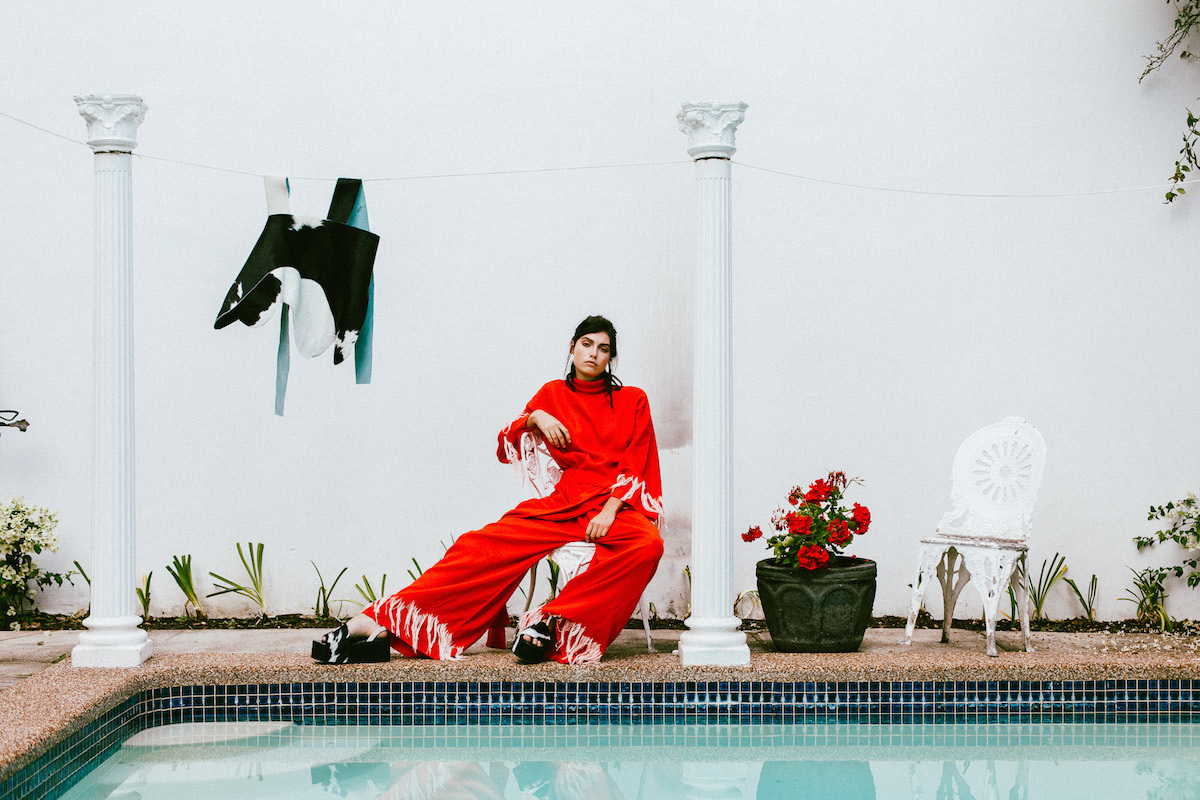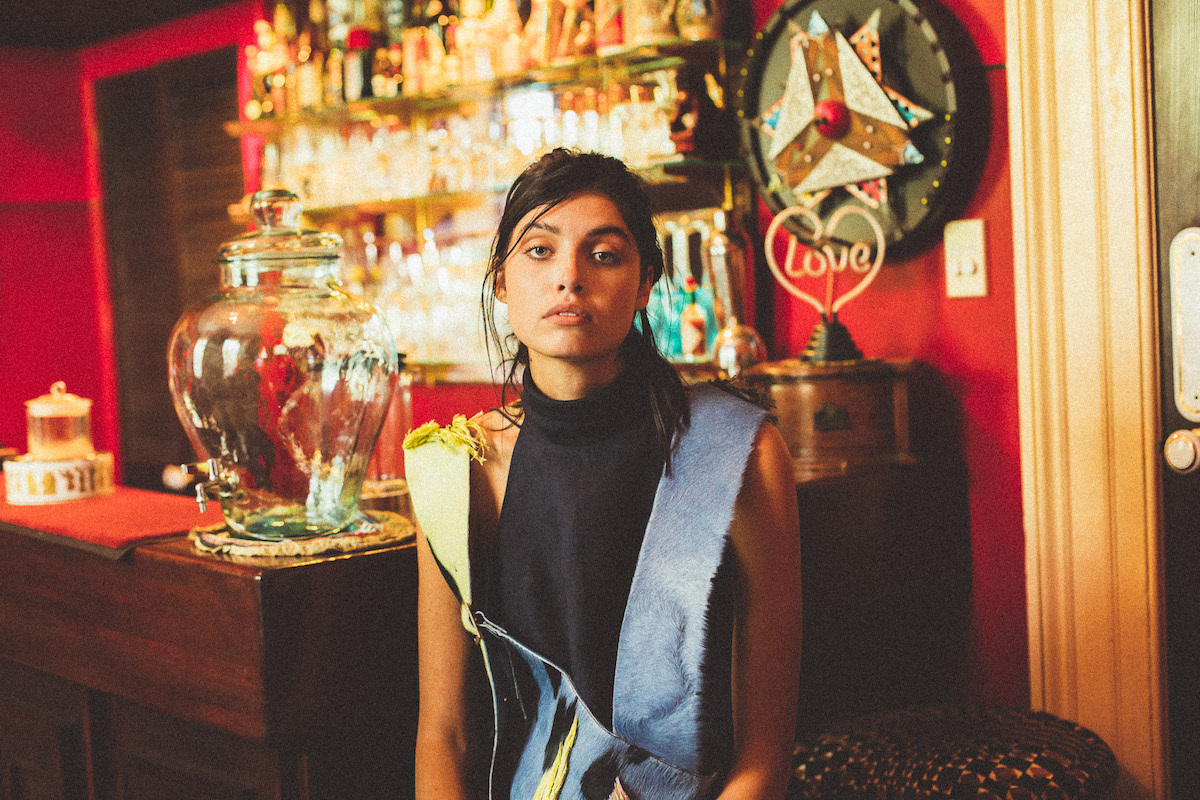Inspired from a young age by her Russian dressmaking mother and embroidering grandmother, Natalie Vladimiroff has always had fashion in her life. As she got older, she paired her family’s creative heritage with a wider pool of inspiration, drawing influence from visionaries like Andy Warhol, Joseph Cornell, Martin Margiela Dries Van Noten, and importantly, British taxidermy artist Polly Morgan.
Morgan’s fingerprints are perhaps most visible on the young designer’s graduate collection, which she describes as “American cowgirl meets taxidermy kitsch.” Be warned, this is not for the faint-hearted. It’s a daring provocation of reality and fantasy, bringing movement to the austere art of taxidermy — taking it from dark and dusty living-rooms into the light. The resulting designs are compelling evidence of her ability to take contrasting concepts to create something new, and challenge how we see a controversial art form.
We caught up with Natalie at her Sydney home to discover more about what influenced her latest collection and where her journey might take her next.
Let’s talk about how you got into fashion. How influential was your family?
Fundamental, really. Growing up, I was always surrounded by my mother’s sewing and designing and creativity. I admit there were periods when I was younger, where I wanted nothing to do with it. But in high school, I really enjoyed textiles. I’ve always been really into art, and I’ve learnt that fashion really lets me create.

Who are your key influences and creative idols now?
I’ve always really loved Martin Margiela and the concept of deconstruction; I love the theory and aesthetic. You can see that in my work. More recently, I’ve been influenced by Dries Van Noten and his opulent textiles and rich design. In terms of emerging designers, I love Phoebe English, and her use of textiles; she has such a creative take on hand techniques while still making her pieces wearable and interesting. I’ve also always been into the modern art movement. That said, I was always more inspired by Andy Warhol as a person than by his art. Then there’s JMW Turner with his use of abstract colour. I feel like that’s what really comes naturally to me. There are just so many influences to choose from and they all played a huge part in my collection.
Speaking of your collection, how did you come up with the name, “UN REAL”?
The collection explores the idea of fantasy and falseness, reality versus illusion. It stemmed from my research into taxidermy, which itself is an exploration into false representations of reality. Taxidermy takes real animal skin and portrays it as something that isn’t real but isn’t quite fake either. In the same way, the textiles I use embody this false sense of authenticity. For example, I’ve dyed cowhide to appear synthetic and used latch hooking to look like fake fur in combination with all the embroidery. So in the context of all this, UN REAL made a lot of sense.

Where did the exploration of taxidermy come from?
As part of my research for the collection, I started with the works of Joseph Cornell. Although he doesn’t use taxidermy overtly, I was always inspired by his assemblages and how he brought together unrelated objects to create fantasy worlds. In one of his works, he used a taxidermy bird and I wanted to explore it further. My aunt also had this taxidermy instruction book and it was both gruesome and morbid. I also love the work of contemporary taxidermy artist, Polly Morgan. She deconstructs taxidermy to create interesting sculptures that are incredibly contemporary.
To play on the taxidermy concept, you’ve used cowhide, which some say is a little confronting. How do you respond to that?
I admit that the pieces do look very animal and that it’s not necessarily appealing to everyone. But animal products are a huge part of the fashion industry and the explicitness is closely tied to my concept. All my fabrics were byproducts from the dairy industry. They weren’t from animals killed only for their fur, which I’m against. At the end of the day, it’s leather. It’s not processed like garment leather, either, so I don’t think you can argue that it’s any worse than a pair of shoes. But you can see how leaving the fur on it has a totally different effect. It’s definitely been a learning experience for me, becoming more aware of animal products in fashion. Going forward, I definitely think about that more when I’m designing. For the UN REAL collection, using cowhide was a challenge to use something new and I thought I could do something quite interesting with it.
So what can we expect from you next?
In August I start a new design journey with a master’s degree in New York City. I feel that UN REAL doesn’t quite fully reflect who I am as a designer, so I want to develop that further and do something that’s more personal to me. Embroidery has always been very prevalent in my family; my grandma was a very talented machine embroiderer, so I think I want to bring together a concept of machine and hand embroidery and see where I can go with that. I’m very excited.
Credits
Text Frankey Chung
Photography Nadejda Vladimiroff
